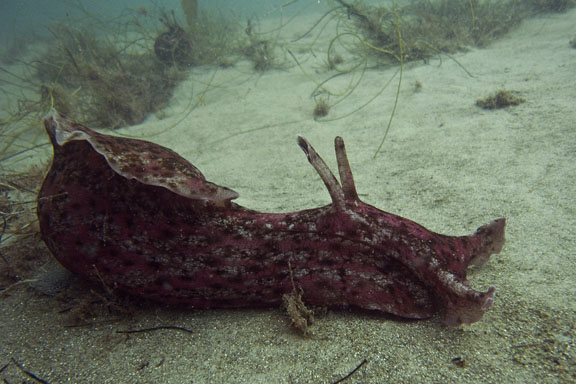Some interesting notes about its physical characteristics:
Alpysia has two pairs of tentacles on top of its head: one pair up front near the mouth that help in movement and another behind the eyes used in olfaction. It is the large anterior tentacles, which resemble the ears of a hare, that are responsible for the common name - sea hare.
The color of sea hares, which can range from purple-reddish-brown to greenish-brown, depends on the color of algae they eat. This year we saw many sea hares that were definitely more on the green end of that scale, which makes me wonder if there is different availability of algae from previous years.
These guys can get big - CA "brown" sea hares (Aplysia californica) can get to be up to 40 cm (16 in) long. However its close relative - the California black sea hare (Aplysia vaccaria) gets even bigger, up to 75 cm (29 in), making IT the largest gastropod in the world.
And about its reproduction....
we mentioned in the field that sea hares are hermaphrodites - simultaneously both male and female. For a peak at their mating "strategies" check out this National Geographic video entitled "World's Weirdest - Underwater Love Chain" !!
and links to previous entries about rocky intertidal trips are here.

1 comment:
There are many excellent site, which caters to all queries regarding dicot leaf, monocot leaf and all the other topics related to Biology Assignment Help of student and provides quality solutions. This is great blog to read for beginners. Since the biology homework help is offered at reasonable rates, Tutorspoint is highly recommended by students worldwide.
Post a Comment